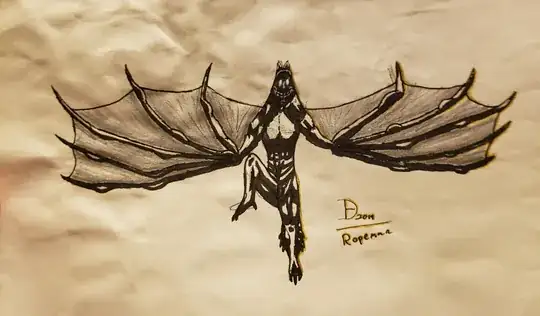The Yale University's Yale Scientific magazine was so nice to calculate in 2013 what wingspan it would take to get a human to fly:
Thus, an average adult male human would need a wingspan of at least 6.7 meters to fly. This calculation does not even take into account that these wings themselves would be too heavy to function.
That is a 75-kilo human male. Or for Feety people: 22 feet wing to carry 165 lbs. And it adds that the wings themselves were not included in the calculation or even functional. Oh, and we have the angel question, which pretty much explains why the mission statements don't work.
So, let's critique:
- The wings are way too short
- The wings are by far not having enough area: Wings make lift by the area!
- Hollow or very fragile bones are a must
- Where's the bird-sternum?!
Calculating wings
Wings generate a force based on a coefficient $\theta$, airspeed and air density $\rho$, as well as the wing area $A$
$$F=\theta\frac 1 2 \rho v^2 A$$
For simplicity... let's take $\theta=1$ (which is a very simple wing geometry - it could be up to about 2), plug $\rho=1.225 \frac{\text{kg}}{\text m^3}$ and $v=3\frac{\text m}{\text s}$ - a stiff walk. Now, balance out the $F=mg$ with $m=75\text{ kg}$ and $g=10\frac{\text{m}}{\text s^2}$... $$A=136 m^2$$
If we assume glider aircraft wing geometry of 12 widths per length and basically rectangular setup, the wings are 3.36 meters tall and 40.48 meters wide - if he crawls through airspace slowly.
If we go fast, like... running the 100 meters in 10 seconds (and thus running 10 meters per second), our hypothetical wingman only needs wings a meter high and spanning 12.25 meters wide. With proper Delta-wing geometry ($\theta=2)$ we get to wings 8.6 meters wide and 0.71 meters high... and still requiring an Olympic record run and to be weightless. Yes, we're still ignoring wing weight.
Or muscles. We totally ignored muscles and the best geometry to attach them. Like, to have wings flap, you need muscles that pull the arms forward strongly. Which best is done by having them attached along the length of the path. This is why birds have this really odd protruding sternum. Where are those on the beast you create?
As dictated...
The surface area of the wings is approximately 8.33544 m²... with Birdwing $\theta=1$ he needs to run an astonishing $v=12.12 \frac {\text m} {\text s}$ to get off the ground. This is pretty much impossible. With Delta-Wings of $\theta=2$ he needs only $8.57 \frac {\text m} {\text s}$ to get lift, which is still rather on the unbelievable side, because of how his wings would give him drag when running. And still, I did not account for the weight of our Bat demon properly - the calculation uses a total mass of 75 kilos on a $g=10\frac {\text m} {\text s^2}$ planet, so... no, he is not able to fly, at best get into gliding from a cliff.
